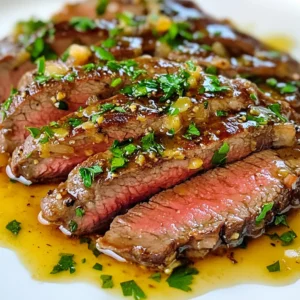
Savory Bavette Steak with Zesty Garlic Pan Sauce
A delicious bavette steak served with a flavorful garlic pan sauce.
Ingredients
- 1 lb bavette steak (flank or skirt steak)
- to taste salt
- to taste pepper
- 2 tablespoons olive oil
- 4 cloves garlic, minced
- 1 cup beef stock
- 1 tablespoon Dijon mustard
- 2 tablespoons unsalted butter
- for garnish fresh parsley, chopped
Instructions
- Remove the bavette steak from the refrigerator and let it rest at room temperature for about 30 minutes. Season both sides generously with salt and pepper.
- In a large skillet, heat the olive oil over medium-high heat. Once hot, add the seasoned steak to the skillet. Sear for about 4-5 minutes on each side for medium-rare, or until desired doneness is reached. Transfer the steak to a cutting board and let it rest while you prepare the sauce.
- In the same skillet, reduce the heat to medium and add the minced garlic. Sauté for about 1 minute until fragrant but not browned.
- Carefully pour in the beef stock and scrape any browned bits from the bottom of the skillet with a wooden spoon. Bring the mixture to a simmer and cook for about 3-4 minutes until it slightly thickens.
- Stir in the Dijon mustard and mix well. Remove the skillet from heat and add the butter, swirling it into the sauce until melted and combined.
- Thinly slice the bavette steak against the grain. Arrange the slices on a serving platter and generously drizzle with the garlic pan sauce.
- Finish with a sprinkle of chopped fresh parsley for color and added freshness.
Notes
Let the steak rest before slicing for better juiciness.